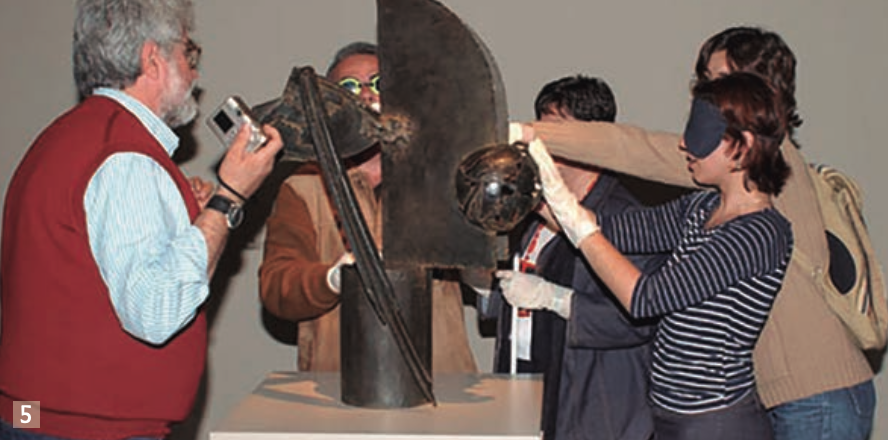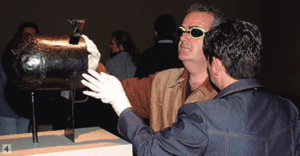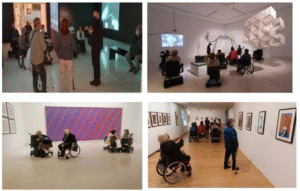Accessibility, beyond the ramp…

A few weeks ago, the lack of access ramps for people with disabilities at COP26 prevented Israel’s minister from attending the climate convention in Glasgow, U.K. The topic of accessibility is therefore back in the spotlight, making us wonder how sensitive or not the world is to the needs of people with disabilities.
A theme that becomes even more complex when we talk about accessibility, not only physical, but also scientific, educational and cultural. To talk about it, this time we interviewed José Agustín Martínez, who works at the Educational Department of the Instituto Valenciano de Arte Moderno (Spain), where he tries to make cultural content accessible to all kinds of audiences.
Starting with a general consideration, Martínez explains that progress has been made in the architectural field. Each country legislates differently, but, in general, it is ensured that everywhere access ramps and spaces adapted to receive people with disabilities are built. In terms of inclusivity in access to cultural content, such as museums and exhibitions, however, we are lagging behind. “While society is increasingly open and sensitive to the various forms of diversity and disability, there is still much to be done,” Martínez says.
Precisely for this reason, best practices, such as those carried out at the Instituto Valenciano de Arte Moderno, are not only valuable, but a true source of inspiration. José Agustín shares about the exhibition of sculptures by artist Julio González, which has been adapted for people who are blind or visually impaired. “For this visual accessibility project, we selected a series of pieces with which we created an audio-narrated route: an expert describes the sculptures, while blind people touch them with nitrile gloves, so as not to damage the artwork, and a route is followed that allows them to see through their hands”. The project doesn’t stop there. In the future, they plan to use technology to allow blind people, through an app, to follow the route completely independently.

Another initiative is the sign language tour organized once a month for the community of people who are deaf or have hearing impairment. “The exhibitions are always different, every Sunday we propose a new one – explains Martínez – and next year we want to go a little further and carry out small workshops with deaf people, and maybe be able to contact an association of young deaf people with whom we would like to start some kind of project”.
“We want to continue to develop projects that allow us to be more and more an accessible and inclusive museum. We want to work, in short, for that united world we all desire, where there are no differences in treatment, where each person feels respected in his or her dignity.” – José Agustín Martínez
For each of these projects, the museum relies on foundations and associations that assist in the development of the routes. José Agustín recalls the words of a blind person who recently spoke to him, sharing the joy of being able to access a museum and explaining that, without the special routes, enjoying a visit would be unthinkable.
The museum also sponsored workshops for people with polio and post-polio syndrome. And for people with Alzheimer’s. One of the most recent workshops was held last summer. “We organized a summer workshop for people, for young people, at risk of social exclusion, coming from foster homes and residences here, in the territory of Valencia. It was a contemporary dance workshop, in which everyone was able to express themselves freely through gestures, through their bodies, and in which, moreover, important themes for young people were addressed, such as relationships, feelings, bullying, …”. When we talk about inclusion, in fact, we are not just talking about a physical issue.
In conclusion, Martínez reminds us that the initiatives, spaces, forums and webinars that promote greater awareness and information on the topic of inclusion generate a huge impact. They are tools that help us become more sensitive.
This year, the United World Project has sponsored a series of meetings and conferences to discuss this theme. You can access them through our Youtube channel.

